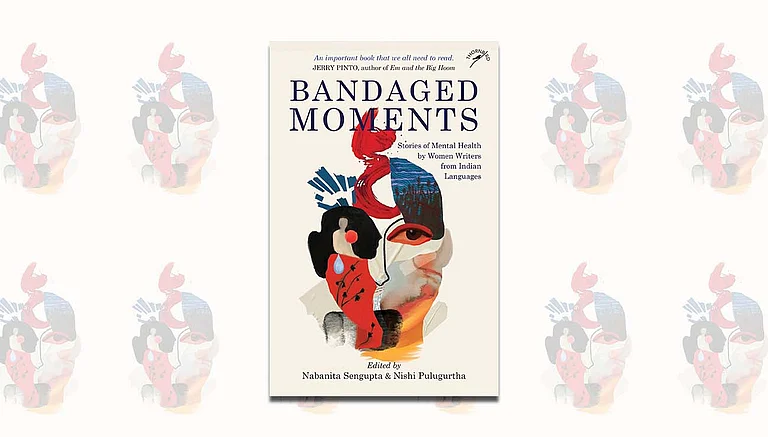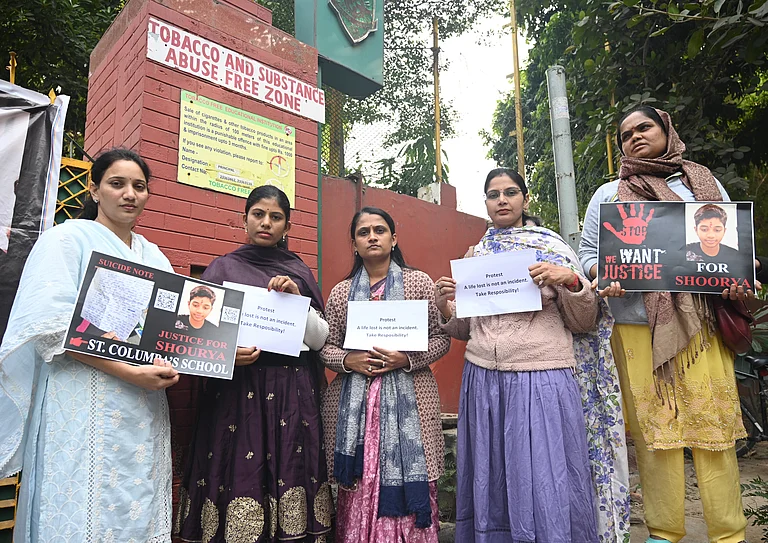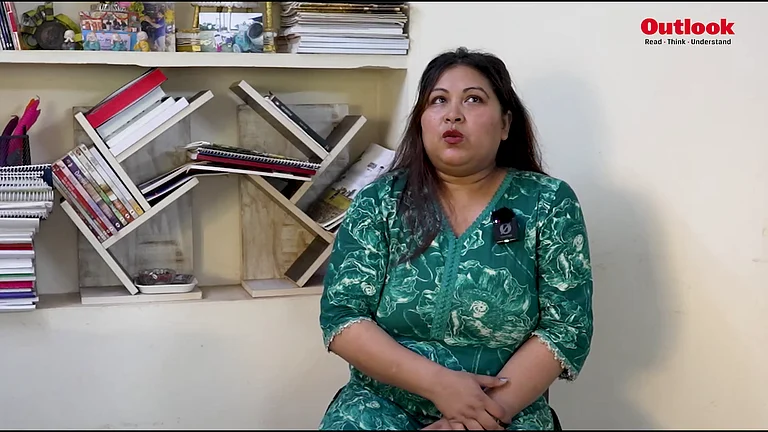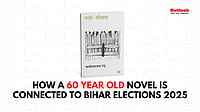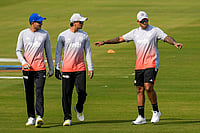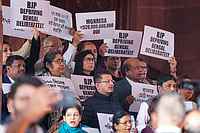I’ve been working as an assistant cinematographer in the Indian film industry
Without the many, many people standing behind me, I wouldn’t have reached where I am today
I just hope to make it big—not just for myself, but for everyone who stood with me
My story began even before I was born—it starts with my Nani and her children. My Nani came from a small fishing village in West Bengal. She was born, raised, and married in the same village, and she had never known about the world outside. Ever since she was a kid, she had responsibilities at her desk for being the eldest girl child. She supported her mother and raised her eight siblings.
In whatever way life led her, when the time came, she was married off to a man—my grandfather—who also came from the same village. They had six children together: five daughters and the last one a son. My mother was the third child. There wasn’t much employment in the village except for fishing, and my grandfather wasn’t into fishing. He was into Islamic philosophy and teachings, so what he earned was the bare minimum. My grandmother, along with her six children, would find ways to earn their bread and make a living.
Their main occupation was making beedies. They would finish the housework in the morning, most of the time surviving on pantha baath as the meal for the day, and then get to work. They would sit for hours making kilograms of beedies, earning just a couple of rupees—just enough to sustain and live.
One day, one of my Nani’s close relatives had gone on a tour and returned. She informed Nani about Ajmer, the dargah, the growing tourism in the place, and the sense of spiritual value the place held. It fascinated Nani, but she had no capital to go on a trip. Instead, she approached her husband about going and seeing Ajmer—who, without considering her request, shut her down, saying women should be at home and not somewhere else.
Nani was disappointed, but her fascination didn’t end. So she packed her things and, with two of her daughters, she eloped and left for Ajmer. With no money, no idea about traveling, and just a desire to see Ajmer, Nani explored the city—and she loved it. She returned to Kolkata and told her husband about the place. She said, “The future is better there. There are a lot of opportunities, and we won’t have to struggle for food and so on.”
That’s how my family relocated from Kolkata to Ajmer—Nani, with five young beautiful daughters and a son. And Nana. The initial days in Ajmer were the most difficult. They stayed at the dargah, begged for money, and ate food from hotels that was given by tourists. Slowly, they rented a place very close to the dargah.
All the daughters started working at different households as maids, and the son started working at the dargah. Nana would spend his time at the dargah, and Nani would also be there.
Apart from the dargah, Nani found another source of employment. The whole family went on to do Baththi ka kaam. If you’ve ever experienced an Indian wedding, you know that on the wedding day, the groom goes from his house to the bride’s house, and what follows him is the baraat, and with the baraat come bands, music, and lights. My family used to carry those lights on both sides of the baraat. They would walk miles to get to the location, do the baraat, and then carry the lights back to deliver them to the main office. And that’s how the family explored Ajmer—on foot and through the many baraats they worked for.
Soon, a lot of noise started building up as the girls grew older. The khadims, who run the dargah, kept telling Nani to get her daughters married. As they were beautiful, it wasn’t safe for them to remain unmarried.
So, this is where my story begins.
Nani found a boy for my mother. A guy named Mohammad Shakil, who did quite well for himself—he worked at a factory and was from Madhya Pradesh. That’s all the information they had. My mom was married off to him at the same rented house they were staying in, in Khadim Mohalla. The ceremony was traditional, and a lot of gifts were given.
As my mother was quite well known for her hardworking nature as a maid, her obsession with keeping things clean, and keeping herself neat—everybody remembers a very fond memory of my mother. They tell me that my mother would earn and spend her money on soap. She would wash her face at least four to five times a day and change clothes just as often. She simply couldn’t stand being dirty.
After marriage, my mother and father moved away from Ajmer city to the outskirts of Ajmer, to Kishangarh. She became pregnant. After the marriage, things started to fall apart. She was left alone in a house, and the relationship with my father became more frustrating and distant because he had other affairs and would beat up my mother. She was trapped in that house during her pregnancy with no support—and that hit her hard.
From here, I come into the picture.
I was born in the Janana Hospital. It was a caesarean delivery. Everybody’s life changed at that moment. My mom became uncontrollable—she was beating up people, getting angry, removing her clothes, refusing to give me milk, and when I was given to her, she started choking me. My father was there, but he showed very little interest in the situation. My Nani and the rest of the family, not knowing what had happened, brought her back to Nani’s place.
Nobody in my entire family had ever received any formal education. Everyone had gone to school only up to the 8th standard at most, so no one could understand what was wrong. Everybody thought it was some kind of spirit that had entered her. So their solution was to take her to different religious institutions, but nothing seemed to work.
Nani had my father take my mother to a dargah at Hussaindigri, somewhere on the outskirts of Ajmer. I was tossed among my Nani, cousin sisters, aunts, and uncle—everyone trying to feed and take care of me. While returning, my father dropped my mother off at the dargah bazaar in Ajmer and left.
I was 3 to 4 months old when he left. Till date, I haven’t seen him. Before leaving, he had asked for me, but my grandmother refused to give me to him.
By now, Nani and the rest of the family had bought a small piece of land on the hills of Ajmer. They had built a large hut and were living there. Amidst all the difficulties, they didn’t know what to do with my mother. She became uncontrollable, and there was a lot of pressure from the neighbors, but the family had no idea how to help her. She was left to roam freely—she would wander around the dargah bazaar in that condition—and eventually, she went missing.
My mom went searching for my father. She got into some train and landed in Chennai. This was the early 2000s. The Banyan as an organization was just coming up, and they had strong collaborations with the Chennai police. The Chennai police found my mother and admitted her to The Banyan. She received treatment there, while back home, everyone had lost hope.
Almost a year and a half later, my mom returned—now well and in a better condition—with The Banyan team. My family was reunited. I was still a baby and had no idea what was happening.
The Banyan informed the family about my mother’s condition and would send medicines every month for her to take and remain stable. But there was a drawback—with psychiatric medication came a lot of side effects, which my mother didn’t like. Slowly, she stopped taking her medicines.
That resulted in a very bad relapse.
Again, my mom became uncontrollable: sharp anger, fighting, beating up people. Once again, there was pressure from neighbors and society.
My family’s condition hadn’t improved even after a year and a half. They still fought poverty. Food came from the dargah. Nani and other members of the family still continued to do Baththi ka kaam. Nani’s relationship with her son also became distant. They didn’t have the money or resources to take my mother back to Chennai to The Banyan. Instead, they tied her in chains—initially outside the hut, and later in one room. She was taken care of by Nani, who fed her, tried her best to make her take her meds or mix them into her food, cleaned her and the space every day.
But the meds didn’t take effect.
My mother’s condition became so bad that twice she attacked my Nani—once on her head with an iron rod—and she had to be taken into emergency care. But my mother remained tied in metal chains for almost 8 to 9 years in that room. Nobody wished that on her, but the family didn’t have the support or means to take any other action.
Now, let me tell you about me. Growing up, I didn’t have a lot of emotional attachment to my mother. She was always a distant figure, and I wouldn’t approach her either because of her aggressive state. For me, my Nani was everything—and so were other family members such as my two cousin sisters, my aunts, and uncle.
Around the town, I was always referred to or called Pagli ka ladka. They didn’t mean any harm; it was just the way they would address me sometimes. But my name, originally being Mohammad Ibrahim, I was called Munna.
Growing up in Ajmer, there was little exposure to the outside world. My world revolved around my home, school, and the dargah. My day in Ajmer would often start with me going to the government primary school, where I went more for the fun and never really to study. Nobody in town was into education. Everyone’s mentality was that you work hard, you earn money. There was no scope for education, and hence I never took it seriously.
Once school was done, I would take out the five- or ten-rupee coin that I had earned from doing chores for my neighbours—such as buying things for them from the shop down the hill. Each errand would often bring a rupee or two, and I would usually save them for later. So once school was over, I would go to the nearest cycle shop and rent a bicycle—five rupees for ten minutes of riding or ten rupees for half an hour. It was the best part of my day. I would just rent the cycle and roam all around.
Once I returned home, I would either go play kanche or take my tire for a ride. I wouldn’t eat, or take a shower, or clean myself. I would just roam and roam. Nani never hit me for doing stupid things, but I remember getting bashed once for not taking a shower for three days straight.
Later in the day, I would leave for the dargah bazaar, carrying a rice bag to bring back food. Nani didn’t always have baththi ka kaam, and that was her only source of income. Most days, we would eat whatever we brought from the dargah. I would go to the dargah with my three friends and spend most of the day in the streets of the dargah bazaar.
Now, I’d be lying if I said I was a clean boy, obedient, and never did anything wrong. I did everything wrong that I could get my hands on—from begging for money, to stealing money, to doing solution (a type of drug you sniff from your handkerchief), to smoking beedi, and so on. I would often swap chappals from the dargah—not because I wanted a new pair once a week, but because I couldn’t afford any, so I just took them. I spent days standing in lines to get food and then returned home in the evening. We would eat that food for the night and hope it would last till the next day.
Since Nani also came from a village, she was very fond of cattle and agriculture. She grew her own vegetables, and we had goats at our home. I loved my goats. I would take them to the hills and just chill with them for hours. One of my favourite goats was named Montu—a completely white bakri, a very energetic fellow.
Later, as I grew a little older, my cousin sisters started working as maids in the neighbouring Khadim’s household. The situation at home wasn’t getting any easier—poverty stared at me. When I was around 7 or 8 years old, I noticed that Nani wasn’t doing well. So I started my first job at a juice shop.
My job was to wash glasses, fetch the juice, and refill it. I would go to school in the morning and, once back in the afternoon, I’d leave for the dargah bazaar where the juice shop was.
I’m grateful for the freedom Nani gave me. It exposed me to both sides of the world—the good and the bad. Whatever I learned about life and people, I learned on the streets of Ajmer and at a very young age. That’s how my world revolved in Ajmer: Home, Dargah, and School.
It was mid-2010. There were rising concerns about my mom. Some of Nani’s neighbours started saying that it had been too long since she was tied up, and that it would be better to take her back to Madras, to The Banyan. Nani didn’t have the financial means, but my uncle managed to arrange the money. Nani, with the help of a neighbor named Mastan, was able to take my mom to Chennai.
There came a point of discussion about me. I was not to join them due to financial constraints, and they weren’t sure where they were going. Nani thought that if I were to be left with my uncle, I would still be roaming around and out of control—and would turn into a proper tapori. So, with the help of one of her friends, she came up with an alternative plan.
The plan was to put me into a madrasa. The madrasa I was put into was called Sufi Sahab Baba Madrasa in Bakra Mandi, on the outskirts of Ajmer. It had both a school and madrasa system—school in the morning and madrasa in the afternoon. I was admitted there. The students in this madrasa were either orphans or had parents who didn’t want them. Very few had parents who would visit and take them home occasionally. I didn’t know which category I was in.
This place was one of the toughest I had to survive in. The streets of Ajmer weren’t this hard for me—because this place felt like jail. I was an outgoing person. I knew the value of freedom because Nani had never controlled me. I was free to do whatever I wanted. But here, I was trapped. I used to get beaten with hard wooden sticks for not being able to study Arabic or for the mischiefs I did. This place left a hole in me. I couldn’t escape it. I did gather the courage to try, but the fear of being caught and the punishments held me back. I had seen the punishments. I was too scared.
In the evening, there was a three-hour break for the kids to play or do whatever they wanted. During that time, I remember going to the Sufi Sahab Baba’s dargah and just crying—crying and begging for help, begging for a better life. Because I was lonely in that place. Nobody came to visit me or bring me anything. My uncle used to visit sometimes and would take me home for the two Eids of the year, but I had to return after two or three days.
I remember sitting on the terrace and staring at the door for hours, hoping for Nani to return. And that’s how my time at the madrasa was. It took out all the mad energy from me—the mischievous behavior and the taporipan inside me. I had become a very calm person.
It was February 2012, and finally, Nani came back with my youngest aunt. I remember I was so happy. She brought me a bottle of Maaza, which I gulped in one go—it was gone instantly. She told me we were going to Chennai. The hospital where my mom was admitted had called me.
I was confused, but then she told me, “There’s samandar (sea) there—right in front of The Banyan.” The image of The Banyan is still fresh in my head. I had imagined it to be a glass building built right on the shores of a beach. That was the image in my mind.
So, with a lot of excitement, I was ready to leave for Chennai.
As soon as we came back home, Nani didn’t waste any time and got my Aadhaar card made. Then, we left for Chennai.
March 8th, 2012 — I set foot in Chennai for the first time and went straight to Kovalam, where Nani was staying. That’s when I met people from The Banyan. The first person I spoke to was Lakshmi ma’am—she was the only one I could have a conversation with, since I didn’t understand a word of what anyone else was saying.
Everyone was surprised to see me at The Banyan. They kept saying, “This is Salma’s son? He’s so big!”
In the beginning, I stayed at the Health Centre and later moved to a hut that Nani had rented. She was working at The Banyan in the kitchen as a chef, and I would spend most of my time at the centre.
The first few days in Chennai were the worst. I hated every bit of it—the food especially. Back in Ajmer, I was eating tandoori roti and meat. Here, I was given upma, idli, pongal—foods I had never even heard of before. The people were sweet, but I couldn’t understand anything they said. I only knew Hindi and Bengali and could read Urdu and Arabic.
I hated the hut we lived in. Many times, I told Nani how much I disliked this place. Even though I had my two cousin sisters for company, they soon started working at The Banyan too. Twice, I packed my bag and threatened Nani that I wanted to return to Ajmer. I went as far as the bus stand, but no one came after me, so I returned.
Eventually, I accepted it. When Nani introduced me to The Banyan, she told them, “This is Salma’s son. Do whatever you want with him.” They decided the first thing they’d provide me was an education.
In those initial days, I was admitted to a nearby matriculation school run by a trust—specifically for underprivileged kids. I still remember Anandhi ma’am taking me to school in her car. I failed the entrance test terribly. Even though I had cleared 6th standard in Ajmer on paper, I hadn’t learned anything.
The principal at Gurukulam insisted that I be admitted to 4th grade, as I had no academic foundation. I had no complaints—I had just escaped the madrasa and was open to anything. Gurukulam was an English-medium matriculation school. But I didn’t even know the English alphabet properly. So, The Banyan started me on tuition classes, especially focused on English. At first, it was the residents of The Banyan who taught me—Bindi aunty, Saroja amma, Soniya, and many others.
One volunteer’s son even came to teach me English and once brought his electric guitar to show me how to play.
Gradually, I began settling in—accepting everything around me and enjoying it, without expectations. At school, the students came from backgrounds similar to mine. They understood my story. I had nothing to hide—they knew I was from The Banyan and that my mother was being treated there.
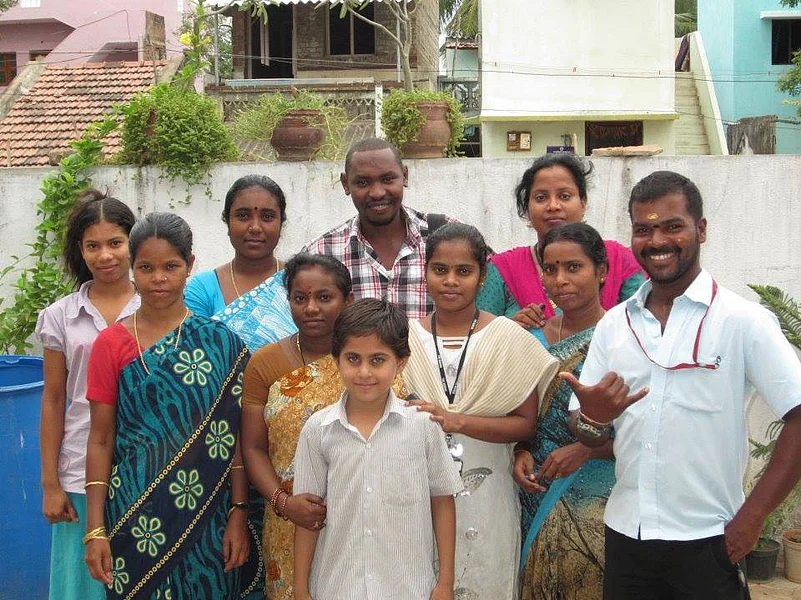
At this point, my mom was at The Banyan’s main branch—Adaikalam in Mogappair. Nani and I would visit her, and during the first few visits, she recognized me and even called me by my name. I slowly got more comfortable around her. Before this, I had never even sat beside her and spoken to her. But she still needed ongoing treatment and monitoring at The Banyan.
Academically, when I started in 4th grade, I failed all my subjects. But my teachers kept encouraging me, and I started putting in real effort. By 5th grade, I was passing all subjects, and by 6th grade, I was topping the class. I had developed a competitive streak.
School was going well, except for one problem: Tamil. I couldn’t perform well in it, and I feared the 10th board exams—because in the matriculation system, failing even one subject means failing the entire exam.
With that fear in mind, I turned to my Banyan family for help. By now, The Banyan had truly become my home. I spent more time there than anywhere else—attending tuitions, talking with residents, translating Hindi to Tamil (my Tamil had improved drastically in just a year), and helping with chores whenever I could.
I approached Vandana aunty and told her about my struggles with Tamil. She said, “If you’re not able to study here, we’ll change your school.”
I remember we had that conversation while Aamir Khan’s television crew was covering The Banyan for his show. I felt such relief knowing I’d be moving schools. There was nothing wrong with Gurukulam—it was only the language barrier. Everything else had been perfectly fine.
So, the Banyan family decided to admit me into APL Global School. Initially, I thought APL would be another matriculation school with students from similar backgrounds, and that I’d settle in quickly and continue academics just as smoothly as before.
But that’s not what happened.

I went for the entrance test at APL, and they told me I had a long way to go—I wasn’t reading well enough.
June 4th, 2015, I officially joined APL Global School. On the first day, I was shocked. I couldn’t believe where I had landed—an international school following the Cambridge curriculum. That first day, I said only two words: “hi” and “bye.” I lacked both the communication skills and academic exposure that the other kids had. They were from a completely different league—most of them arrived in cars, while I took three public buses just to reach school.
They spoke fluent English, and their conversations were on topics I had never even heard of in my life. It was a completely new world for me.
Academically, I was back to zero. The syllabus, the structure, the question papers—everything was different and overwhelming. In 7th grade, I failed all my subjects. But the teachers were kind and continued encouraging me to improve.
I also had no friends. I could barely talk to anyone, and making connections was hard. Even food was an issue initially—there was nobody to make meals for me. Thankfully, my guardian at the time, Zeinia, spoke to the school about my situation, and they offered me free meals.
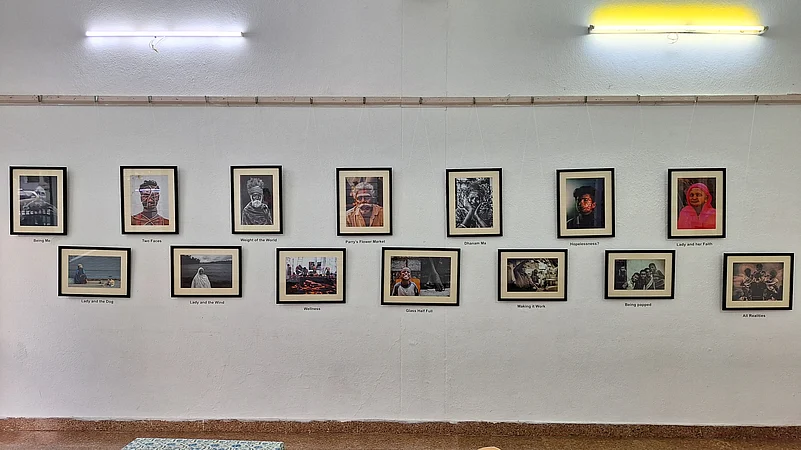
But APL drained me completely by the end of that year. I had decided I would leave and return to a matriculation school. I even did my research and found some options. I was about to approach the Banyan family to inform them.
Just then, something changed. A boy named Aadhavan from my school came up and spoke to me—in Tamil. We became friends, and he told me not to leave. His support made me rethink my decision. I thought, “At least now I have someone to be with.” So, I stayed.
The next year, Aadhavan left—but by then, I had settled in. I had made new friends. I became known as the “Tamil-speaking guy” in an international school. Of course, I also spoke English when needed. I completed my entire schooling at APL. There was a time when I was scared to utter even a single word of English, but by 10th grade, I stood on stage, gave a speech to the entire school, and even won a Student Council seat.
In my IGCSE exams, I chose Art & Design as a subject and explored art and street photography. I would travel around Chennai, capturing images of people and the streets. My teachers were confident I’d do really well in the exams—but I didn’t perform up to expectations. I was disappointed.
However, in my A Levels, I again took Art & Design. This time, my chosen theme was mental health—something deeply personal, something I wanted to understand better given my history. I also studied Psychology at the time. For my AS Level examinations, I was awarded the World Topper in Cambridge
International for my Art & Design project. I had put my soul into that work—it was raw, honest, and deeply personal.
But being at APL came with challenges. Most of the time, I made up stories about my background—about my parents and where I came from—because I was afraid of being judged. I didn’t think my classmates would understand or accept my truth.
To most of them, I said my father worked in IT and my mother was a housewife. Only a few close friends knew the real story. Toward the end of school, though, I began to feel a deep sense of disconnection. I felt I wasn’t being real—and it weighed heavily on my heart. So, one day, I wrote an Instagram post. I shared the truth about where I came from and how I felt. I don’t know if the post reached everyone, but from that moment, I realized something important: being true to yourself matters more than anything. Otherwise, no matter what you achieve, it won’t really feel like yours.
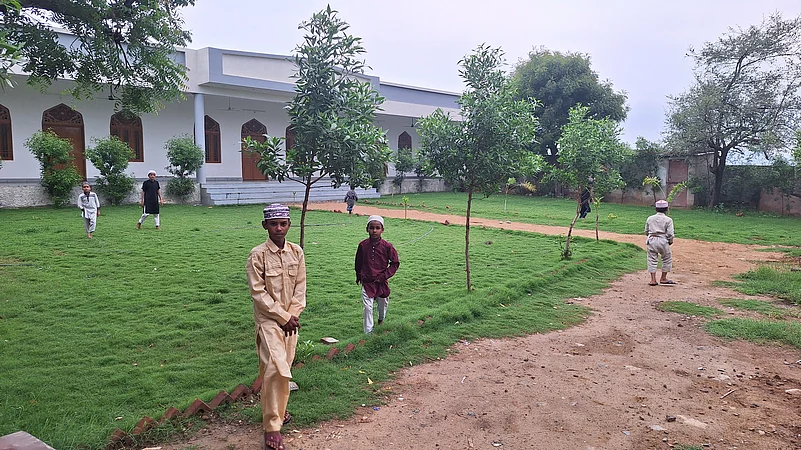
APL gave me the platform to explore myself—and The Banyan supported everything I wanted to do. By the time I finished school, I knew I wanted to pursue either Media or Film. After a few conversations with Senthil uncle, I got clarity—I would pursue Film. He suggested a few colleges, and I set my heart on Srishti Institute of Art, Design & Technology. I prepared and gave the entrance test—and one day, I got in.
I remember that moment so vividly. I just started sobbing uncontrollably. The tears wouldn’t stop. I had worked so hard to get there. I had made it. I was the first in my family—and even in my extended relations—to go to college and pursue his passion.
During my time at APL, I began living at The Banyan Health Centre, because I needed access to a computer and the internet to study and build my skills. I remember sleeping on the benches at the entrance. Later, I shifted to random rooms or the hall. I kept all my belongings in a box and managed somehow.
Living at The Banyan meant being around all kinds of people. Most were kind and supportive—they genuinely wanted me to do well. But there were also a few who didn’t like me staying there. Some even tried to hurt me in small ways.
I didn’t report it. I knew that if I had brought it up, the senior management—Swapna akka, Saga akka, Vandana aunty—or someone else would have resolved it. But I chose not to. I lived through it, keeping my focus on my goals and enduring whatever life threw at me.
Still, everyone else was incredibly supportive. Saga akka, my guardian, made sure every single need of mine was met.
Before leaving for college, my only fear was the financial aspect. All the kids who study at Srishti are rich and come from well-off backgrounds. My biggest worry was how I was going to deal with them. But deep down, I knew I was ready.
College was one of the best times of my life so far. I had the freedom to do whatever I wanted, and Bangalore gave me immense exposure to growth and career opportunities. Srishti as a college doesn’t teach you a lot academically—it’s the student body and the exposure that really shape you.
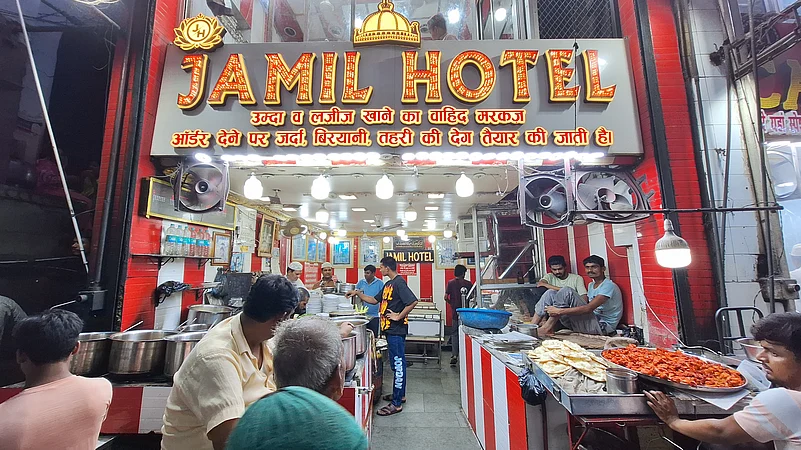
By the second year of college, I had already started working to earn my own pocket money. I began doing photography and videography gigs, earning enough to cover my leisure expenses. During the first year, I used to receive ₹1,500 every month from my guardian, but from the second year onwards, I stopped asking and started managing on my own.
Towards the end of college, I was required to complete two internships—and I did both under the renowned cinematographer Mr. P. C. Sreeram. I got the appointment to meet PC sir through Senthil uncle. I remember the day he called me to meet him—I had taken a day’s leave and travelled to Chennai. I arrived at the location half an hour early, waiting patiently, biting my lips, trying to calm myself down, listening to Divine’s rap music.
When the time finally came, I went in and met him. Initially, he said no—he told me he wasn’t doing anything at the moment. But I was determined. I told him I wanted to join him, and seeing that I wasn’t letting him go, he finally said, “Okay, you come.”
Since then, I’ve been working as an assistant cinematographer in the Indian film industry. My first production project under PC Sreeram sir was an advertainment for Everest Masala starring Shah Rukh Khan and Amitabh Bachchan. Since then, I’ve worked with PC sir on two more advertisements, and later, he sent me to Nirav Shah sir, with whom I’ve worked on multiple ads and two feature films.
It had been a dream since my 7th grade to see my name on the silver screen—ever since I took part in a photography contest at school. And now that dream is coming true, as the films I’ve worked on are soon to be released in theatres.
Today, I still live at the Banyan Health Center, and my mom is still a resident there. She’s still on medication, but she’s doing far better than she was when I was a kid. Nani works at the Dargah in Kovalam and still makes dinner for me.
Do you believe in miracles? Because I do.
Never in my wildest dreams would I have thought that I’d make it this far. But somehow, I have. Yet, somewhere deep down, I’m still just a boy from the streets of Ajmer who only wants to live a simple life—because I know that nothing truly matters except how you treat people and what you leave behind. My words will always fall short when it comes to thanking the Banyan family for what they’ve done for me, without ever expecting anything in return. This is not just my story. This story belongs to each and every one of them—those who have been a part of the Banyan, who have worked there, volunteered there, or simply experienced what it is to be part of that world.
Without the many, many people standing behind me, I wouldn’t have reached where I am today. I just hope to make it big—not just for myself, but for everyone who stood with me, and for The Banyan.
But deep down, I also know—even if everything I own or have done disappears in a moment, I would still live a life of contentment. I would still adapt to anything life throws my way.
A shorter, edited version of this appears in print
In its August 21 issue Every Day I Pray For Love, Outlook collaborated with The Banyan India to take a hard look at the community and care provided to those with mental health disorders in India. From the inmates in mental health facilities across India—Ranchi to Lucknow—to the mental health impact of conflict journalism, to the chronic stress caused by the caste system, our reporters and columnists shed light on and questioned the stigma weighing down the vulnerable communities where mental health disorders are prevalent. This copy appeared in print as 'Growing Up, I Was Called Pagli Ka Ladka’









